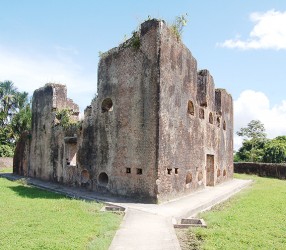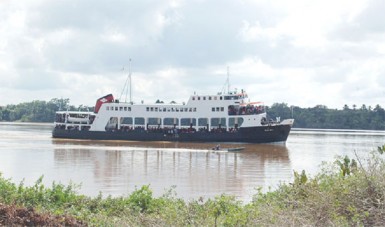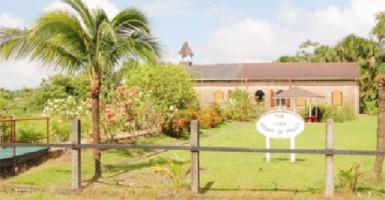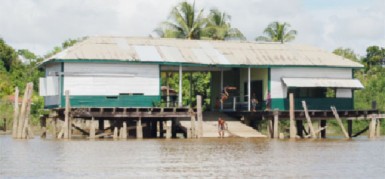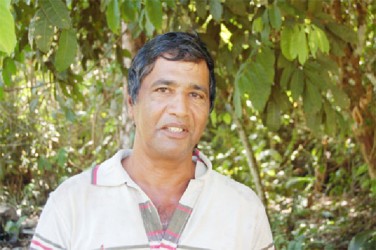Fort Island, located not very far up the Essequibo River, boasts the best preserved built evidence of Dutch settlement in Guyana. Approaching the island, the calmness of the water and peaceful atmosphere are quite in contrast to the menacing defences of Fort Zeelandia which was built in the 18th century.
Fort Zeelandia – which was named after the province of Zeeland in the Netherlands – and the Court of Policy building were declared National Monuments by the government in 1999 and are now maintained by the National Trust of Guyana (NTG). Both are made of clay bricks.
The Court of Policy, which was constructed a few years after the fort, was restored in February 2007 and the Dutch Heritage Museum was set up in the building.
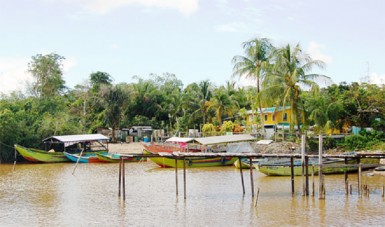
A huge sign welcomes visitors as they make their way towards the clay-brick building, which is the first historical structure one meets after disembarking from the boat. When Sunday Stabroek arrived, two men were sitting on a bench having an early Sunday morning drink. Alfred Mittleholzer who is responsible for the security of the museum was standing nearby. He led us along a clay-brick walkway that was lined with beautiful flowering plants, while on both sides of the well-kept lawn stood two gazebos.
The museum holds a collection of olive green Dutch bottles as well as various pieces of ceramic dishes and brass ornaments, donated by various people. Huge posters with pictures and information were also on display. Alfred, who has been attached to NTG for the past 12 years, said the museum gets a few visitors daily.
Huge bats flew over our heads as we spoke and we also noticed some small wasps’ nests and termite infested boards.
Alfred was born on Fort Island but his parents were Berbicians. They moved there over 70 years ago in search of a living. They bought a large portion of land and did farming. He said proudly that the author Edgar Mittleholzer had been his father’s cousin.
The gravestones of members of the Roth and Backer families can be seen on the floor of the building. One belonged to Michael Roth, a surgeon who worked for the Dutch West India Company and died on November 13, 1790.
Johannes Backer was the Captain and Commandeur of the colony who died on February 19, 1772. His son, Laurens G L Backer, died on September 1, 1768.
The building has three chambers one of which was where the Court of Policy and Justice – ie, members of the government – met and another of which served as a church. It is the oldest surviving church building in Guyana. The building also had a more sinister function, however, and that was as a vendue office where the enslaved were sold.
Fazal Ally, 21, left his Tuschen, East Bank Essequibo home six months as ago to seek employment in Fort Island. The Armory House or ‘Powder House’ that is shaped like a vault is to undergo a facelift, and Fazal, along with other workers had started to clean up in preparation for the re-laying of clay bricks on the floor. He also works part-time on Alfred’s cattle farm.
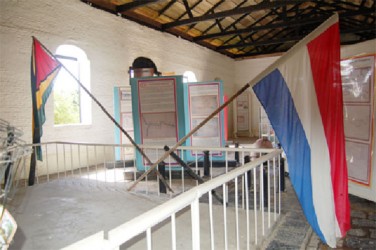
Robby Mahadeo Persaud’s humble shack is among other houses, which are located along the concrete walkway that connects the Court of Policy building and Fort Zeelandia. There is also a health centre and an abandoned church, while the primary school is
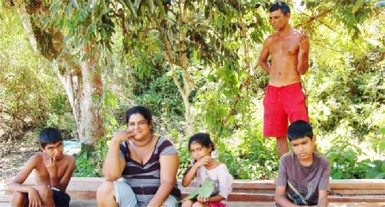
located elsewhere.
The residents are mostly engaged in farming and when we visited, many of them had gone to the Parika market to sell their produce. The population of the island has declined over the years as is evident from the abandoned houses along the walkway.
Robby struggles as a farmer to take care of his five children but has dreams of building a better home one day for his family. He was born on Fort Island but at the age of seven he moved with his parents to another island. Seven years later his mother bought a house on eastern Hog Island along with a large plot of land that was used for cattle rearing and fruit farming. He returned to Fort Island at age 25 to live with his reputed wife, Rajdai Kiralpattie.
His two older children are away from home – Ashley attends the Kuru Kuru College while his son, Anand works in the interior. The three others; Akash, 13, Alvin, 11, and Asha, 7, were very friendly and helpful and followed us around for the rest of our visit. They were very excited to pick cashews for us from nearby trees.
Fort Zeelandia
We walked over to Fort Zeelandia, passing the Armoury. Cannon were strategically placed in front of the fort, overlooking the Essequibo River; from the time they were placed there they were never fired in battle. In fact, Fort Zeelandia never had to defend itself against invaders, since the colonies which made up modern-day Guyana changed hands without a shot being fired.
Standing close to a speedboat on the river bank, Zakir Mohamed Omar watched us as we walked around taking pictures. He is responsible for keeping the fort and the lawns clean but was concerned that the Regional Democratic Council was not providing “gas for the weeding machine.” Zakir who also hails from Tuschen has been employed with NTG for the past 13 years.
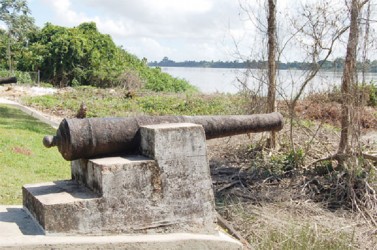
Fort Zeelandia was designed by Laurens Storm van ’s Gravesande when he was Colony Secretary (he later became governor) and was completed in 1744. The lower storey served as a warehouse for provisions and powder magazines. The upper storey housed the
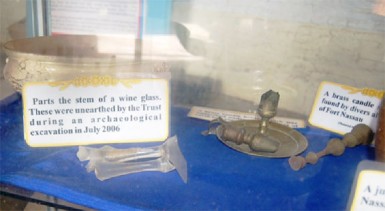
quarters of soldiers and non-commissioned officers. There were mortars and swivel guns on the roof.
At the end of our visit, our three little friends accompanied us to the stelling. They waved us goodbye as we set off in speedboat that had the words; ‘In God we Trust.’
As we were leaving two other boys were skilfully taking plunges from the stelling into river while Asha and her brothers watched.
We bid farewell, not just to the children but to the monuments which were filled with rich history, feeling quite pleased at the transformation that had taken place in relation to their maintenance in comparison with when we last visited several years ago.
